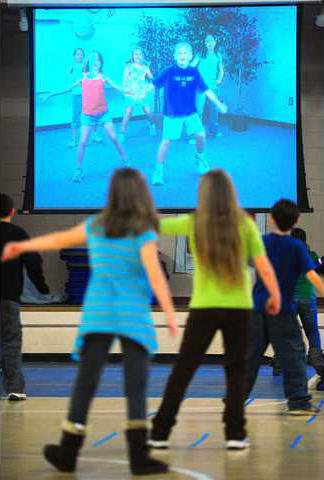As standardized tests have become the norm in schools, so has holding fewer physical education classes in favor of more class time.
Recent studies suggest, however, that trend is more detrimental than helpful.
"A lot of people have given up PE for classroom time and that has not increased academic performance," said Laurie Jossey, associate professor in physical education at North Georgia College & State University. "With the test scores being so important, a lot of people have said, ‘Let's give them more seat time.' That's not shown to correlate with academic performance."
Jossey attributed the trend partially to PE teachers leaving or retiring and school systems choosing to adapt their physical activity schedule instead of hiring a new teacher.
"I think the more recent trends have been simply because of budget cutbacks and the push on test scores," Jossey said. "That created the perfect storm for us in physical education."
In an academic review published Jan. 3 in the Archives of Pediatrics & Adolescent Medicine, authors based out of the EMGO Institute for Health and Care Research in Amsterdam, the Netherlands examined 14 studies, most from the U.S., Education Week reported. Six of them suggested a positive correlation between physical activity and academic performance.
The link could be caused by many factors, including increased blood and oxygen flow to the brain, boosts in mood-improving hormones and "increased growth factors that help create new nerve cells and support synaptic plasticity," according to the review.
More studies need to be done before anything definitive is released, however, the authors stated.
"Kids who are more physically active tend to perform better academically," Jossey said. "If you let them go release some of that activity, they're actually able to sit there and learn. Short activity breaks at the early childhood level can improve cognitive performance and also behavior."
Therese McGuire, health and physical education program specialist for the Georgia Department of Education, said the physical education and health requirement for elementary schools is 90 clock hours per year. Middle schools don't have a requirement and high school students must complete one personal fitness class.
McGuire is aware of two in-state studies that showed a positive link. One done by a professor at Georgia Health Sciences University in Augusta correlated daily recess to increased math test scores, and a Cobb County school added cardio activity in the mornings. She said school officials have seen some test score increases and positive things with discipline.
That's one reason Barry Walton, principal at Friendship Elementary School, chose to transition his institution into a wellness school this year.
Walton said physical activity is essential to brain function because it keeps oxygenated blood flowing through the body.
"We have energy breaks throughout the day, first thing in the morning and another one at 1 p.m.," he said. "They become more attentive. After lunch, particularly if you've eaten a lot of carbs, you get lethargic (as the blood sugar drops). This gets the blood flowing again and they can end the day in a more productive manner."
One study Walton read reported obese students are four times more likely to be school impaired, possibly because of the stigmas associated with weight gain.
"Those type students tend to be more reserved, not likely to participate and just kind of get behind the scenes, so to speak," he said. "We haven't really been in here long enough to see the kind of improvements we want to make from year to year. There's tons of information, tons of research and data that indicates it does make a difference."
Because the school's schedule only allows time for PE once a week, Walton said students are encouraged to be active at home, too.
"Whatever you do, make it fun. When you talk about physical activity, we're not talking about you have to go run two or three miles or prepare for an Ironman," he said. "You don't have to make it something structured with time limits, just make it a priority to get outside and move."
Jossey said Wauka Mountain Multiple Intelligences Academy started Zumba and an active for life program as well.
Like Friendship, students at Enota Multiple Intelligences Academy come to PE once a week for 45 minutes. They also have a weekly activity class called Creative Movement, said Kraig Peebles, physical education and health teacher.
"I don't know that test scores have improved that much," Peebles said. "I think taking PE away is certainly not a good thing, but I understand they have to get their class time in as well. It's harder to get all those activity classes and the academics they must have for the (Criterion-Referenced Competency Test). It's a nightmare for administrators to get it all scheduled and be fair about it."
He said because of the research, students are allowed to stretch before they begin testing.
"If you don't get the body going, I don't think the mind works very well," Peebles said.

